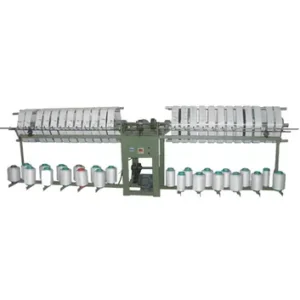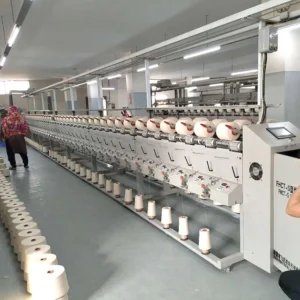The textile industry is undergoing a green revolution as more manufacturers turn to organic materials.
Consumers today are increasingly aware of how their clothing choices impact both personal health and the environment.
This shift toward organic textiles isn’t just a passing trend – it represents a fundamental change in how we think about sustainable fashion.
In this article, we’ll explore the numerous advantages of using organic materials, from environmental benefits to superior product quality.
Why Are Organic Materials Better for the Environment?
Reduced Chemical Pollution
Organic farming practices strictly prohibit the use of toxic pesticides and synthetic fertilizers, which significantly reduces chemical pollution.
This approach leads to cleaner waterways, as there is no chemical runoff contaminating rivers, lakes, and oceans.
Healthy ecosystems surrounding cotton fields benefit from these practices, supporting diverse wildlife and maintaining balanced habitats.
Lower Carbon Footprint
Organic cotton production is notably more sustainable, emitting 46% less greenhouse gas compared to conventional farming methods.
This reduction is attributed to the use of sustainable farming practices that enhance soil health and promote biodiversity.
Healthy soils act as effective carbon sinks, capturing and storing carbon dioxide from the atmosphere over time.
Water Conservation
One of the most significant benefits of organic cotton farming is its impact on water conservation.
Farmers practicing organic agriculture primarily rely on natural rainfall, rather than intensive irrigation systems that deplete local water resources.
This sustainable approach not only protects water supplies but also helps maintain the natural hydrology of the area, benefiting both ecosystems and agricultural productivity.
Also Read:
Strategies for Tracking and Minimizing Energy Use in Textile Manufacturing Facilities
How Do Organic Materials Benefit Consumer Health?
Hypoallergenic Properties
Organic fabrics are particularly beneficial for individuals with sensitive skin or allergies, as they are free from harsh chemical residues that can lead to skin irritation.
The absence of these chemicals makes organic textiles a safer choice for consumers, ensuring comfort without the risk of allergic reactions.
This quality is especially important for children and others with heightened sensitivities, allowing them to wear clothing that is both gentle on their skin and environmentally friendly.
Non-Toxic Production
The production of organic materials is rooted in non-toxic principles, meaning that harmful chemicals are excluded from the farming and manufacturing processes.
This not only creates safer working conditions for farmers and factory workers but also results in products that are free from dangerous substances.
Consumers can feel confident in their purchases, knowing they are supporting a system that prioritizes health and safety throughout the entire supply chain.
Natural Breathability
Organic cotton and other natural fibers offer superior breathability compared to synthetic alternatives.
This natural property allows for better air circulation, helping to regulate body temperature effectively.
This breathability is especially advantageous in warmer weather, as it helps to wick moisture away from the body and prevent overheating.
What Quality Advantages Do Organic Textiles Offer?
Superior Softness
One of the standout qualities of organic cotton is its superior softness.
The fibers remain intact longer during the growing process, resulting in luxurious fabrics that feel gentle against the skin.
This inherent softness enhances the overall comfort of clothing, making organic textiles a preferred choice for those who prioritize quality and tactile experience in their garments.
Enhanced Durability
Organically grown fibers are known for their strength and resilience, which translates into enhanced durability for clothing items.
This durability means that organic textiles can withstand regular wear and tear better than many synthetic options.
Consequently, garments made from organic materials last longer, maintain their shape, and retain their aesthetic appeal over time, providing greater value for consumers.
Better Moisture Absorption
Natural fibers, such as organic cotton and linen, excel in moisture absorption, making them highly effective in various climates.
Unlike synthetic fabrics that may trap moisture, organic textiles help wick sweat away from the body, keeping the wearer comfortable and dry.
This quality is particularly beneficial for active individuals, as it enhances overall comfort during physical activities and varying weather conditions.
And More:
- How to Source Sustainable Raw Materials for Textile Manufacturing
- How to Ensure Compliance with Global Sustainability Standards in Textile Manufacturing
- How to Transition to Renewable Energy in Textile Production
How Does Organic Production Support Ethical Labor Practices?
Fair Trade Principles
Many organic textile producers operate under fair trade standards, which are designed to promote equitable trading relationships.
These principles ensure that farmers and workers receive fair wages that reflect their labor and the cost of living in their communities.
By supporting these standards, consumers contribute to a system that values human rights and prioritizes the well-being of those involved in the production process.
Community Development
Organic farming often serves as a catalyst for sustainable economic development in rural areas.
This approach encourages local communities to invest in their agricultural practices, leading to improved livelihoods and enhanced community resilience.
As organic farming grows, it can provide training, education, and resources that empower local farmers and contribute to the overall well-being of the community.
Child Labor Prevention
One of the key components of organic certification is the strict enforcement of labor standards, which explicitly prohibit child labor.
This ensures that children are not exploited for agricultural work and can instead pursue their education and childhood development.
This commitment to child labor prevention reflects a broader ethical stance that prioritizes human dignity and social responsibility in the textile industry.
What Are the Long-Term Cost Benefits of Organic Textiles?
Reduced Healthcare Costs
The use of organic materials significantly lowers exposure to harmful chemicals, which in turn reduces the risk of health issues associated with chemical exposure.
This benefit extends to both workers in the production chain and consumers who wear these textiles.
In the long run, reduced healthcare costs can lead to substantial savings for individuals and society as a whole.
Lower Environmental Remediation Costs
Organic farming practices help prevent chemical pollution, which eliminates the need for costly environmental cleanup efforts.
When chemicals are avoided, the risk of soil and water contamination decreases, resulting in lower remediation costs for communities and governments.
This proactive approach underscores the importance of sustainability in maintaining both ecological and economic health.
Higher Product Longevity
Organic fabrics are known for their superior durability and resilience, which translates into longer-lasting clothing. This durability means that consumers will not need to replace their garments as frequently, ultimately leading to cost savings over time. While the initial price of organic textiles may be higher, the investment pays off due to the reduced need for replacements. As a result, consumers can enjoy high-quality products that stand the test of time, making organic textiles a more economical choice in the long run.
How Do Organic Materials Perform Compared to Conventional Options?
Color Retention
Organic fabrics typically hold natural dyes more effectively than their synthetic counterparts.
This quality means that colors remain vibrant and true for longer periods, even after multiple washes.
The absence of harsh chemical treatments in organic textiles contributes to this enhanced color retention, allowing consumers to enjoy their garments without worrying about fading.
Odor Resistance
Natural fibers used in organic textiles exhibit better resistance to odor buildup compared to many synthetic materials.
This inherent property means that garments made from organic materials can be worn longer between washes, reducing the frequency of laundering.
Consumers appreciate this benefit as it enhances convenience and sustainability in their clothing choices.
Temperature Regulation
Organic materials are adept at adapting to changes in body temperature, providing a comfortable wearing experience year-round.
In colder months, organic fabrics offer natural warmth, while in warmer months, they help to keep the body cool.
This ability to regulate temperature is a significant advantage over synthetic options, which can trap heat and moisture.
What Certifications Should Consumers Look For?
GOTS (Global Organic Textile Standard)
The Global Organic Textile Standard (GOTS) is widely regarded as the gold standard for organic textiles.
It encompasses both environmental and social criteria, ensuring that every aspect of the production process aligns with sustainable practices.
GOTS certification verifies that textiles are made from at least 70% organic fibers and that the manufacturing process adheres to strict ecological and toxicological criteria.
This certification guarantees integrity throughout the entire supply chain, from fiber cultivation to final product, ensuring that consumers can trust the authenticity of organic claims.
Oeko-Tex Certification
Oeko-Tex certification is another crucial label to look for when choosing textiles.
This certification guarantees that the fabrics are free from harmful substances and chemicals that could pose health risks to consumers.
Oeko-Tex tests for a wide range of toxic chemicals, including heavy metals, pesticides, and allergens.
This certification complements organic certifications, providing consumers with complete safety assurance.
USDA Organic
The USDA Organic certification is the strict American standard for organic agricultural products, covering not only food but also textiles derived from organic sources.
This certification verifies that farming methods meet rigorous organic requirements, including the prohibition of synthetic fertilizers, pesticides, and genetically modified organisms (GMOs).
When textiles carry the USDA Organic label, consumers can trust that the fibers are grown and processed according to stringent organic standards, ensuring a commitment to ecological integrity and sustainable practices.
And More:
- How to Train Staff for Sustainable Practices in Textile Manufacturing
- 6 Common Mistakes When Sourcing CNC Winding Machines
How Can Businesses Transition to Organic Materials?
Supplier Verification
For businesses looking to transition to organic materials, thorough supplier verification is essential.
This process involves vetting suppliers to ensure they adhere to genuine organic practices.
Building direct relationships with certified farms can enhance authenticity and provide a deeper understanding of the supply chain.
This verification process is crucial for maintaining consumer trust and ensuring compliance with organic certifications.
Gradual Product Line Conversion
To effectively transition to organic materials, businesses should consider a gradual conversion of their product lines.
Starting with core products allows for manageable testing and market response evaluation.
As confidence in organic materials grows, businesses can expand their range of organic products.
This step-by-step strategy ensures that companies can adapt to the challenges of sourcing and production while responding to consumer demand for sustainable options.
Consumer Education
Clear communication about the benefits of organic materials is vital for businesses transitioning to organic textiles.
Educating consumers on the environmental and health advantages of organic products fosters transparency and builds trust.
Effective consumer education not only enhances brand loyalty but also empowers customers to make informed choices that align with their values, ultimately driving demand for organic materials.
Conclusion
The transition to organic materials represents more than just an eco-friendly choice – it’s an investment in a sustainable future for the textile industry.
The initial challenges of switching to organic production are far outweighed by the long-term advantages for both companies and the planet. As awareness grows, organic textiles are becoming the standard rather than the exception in quality fashion.
The time to embrace this positive change is now, before sustainability becomes a requirement rather than a competitive advantage.












